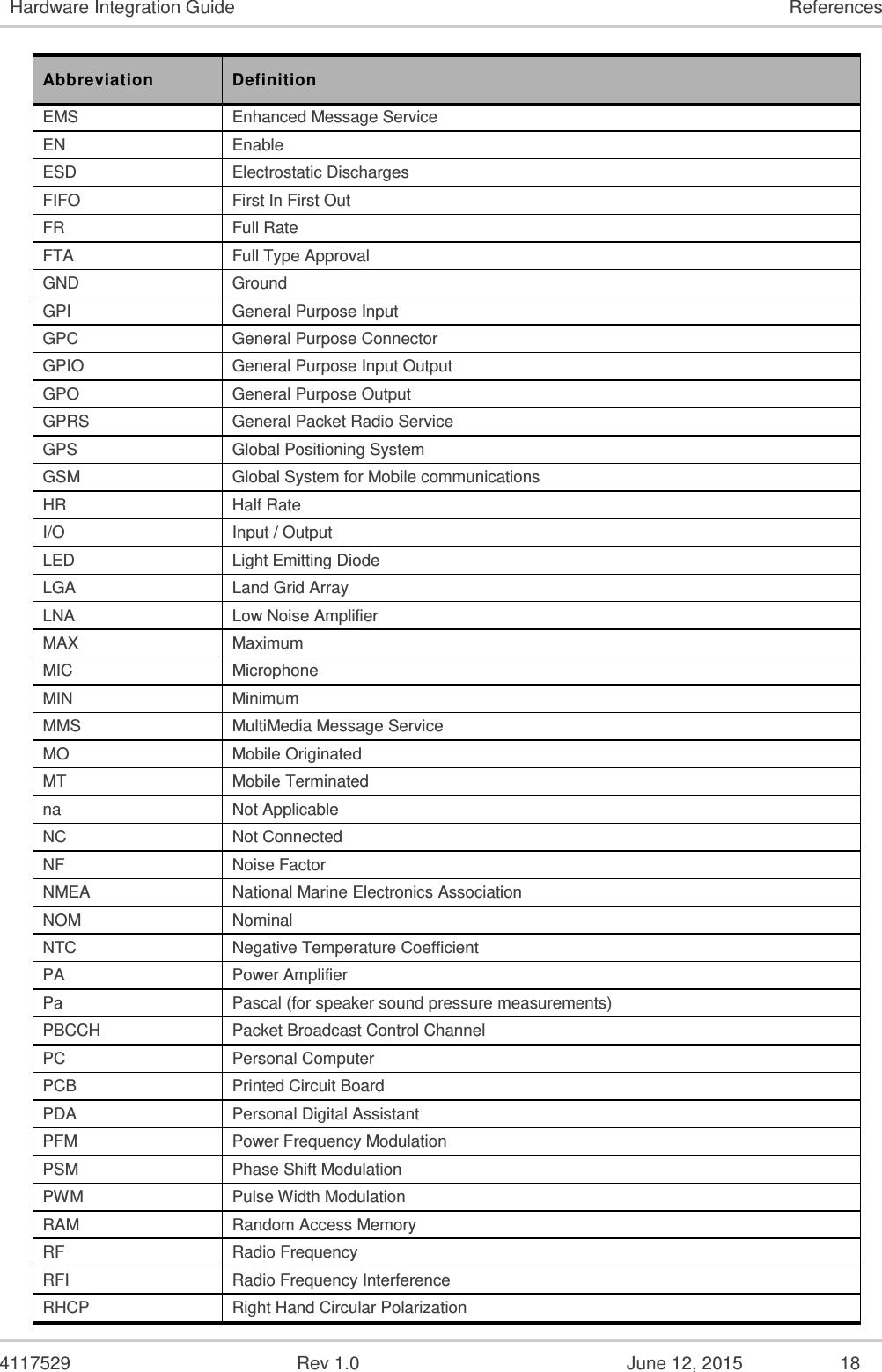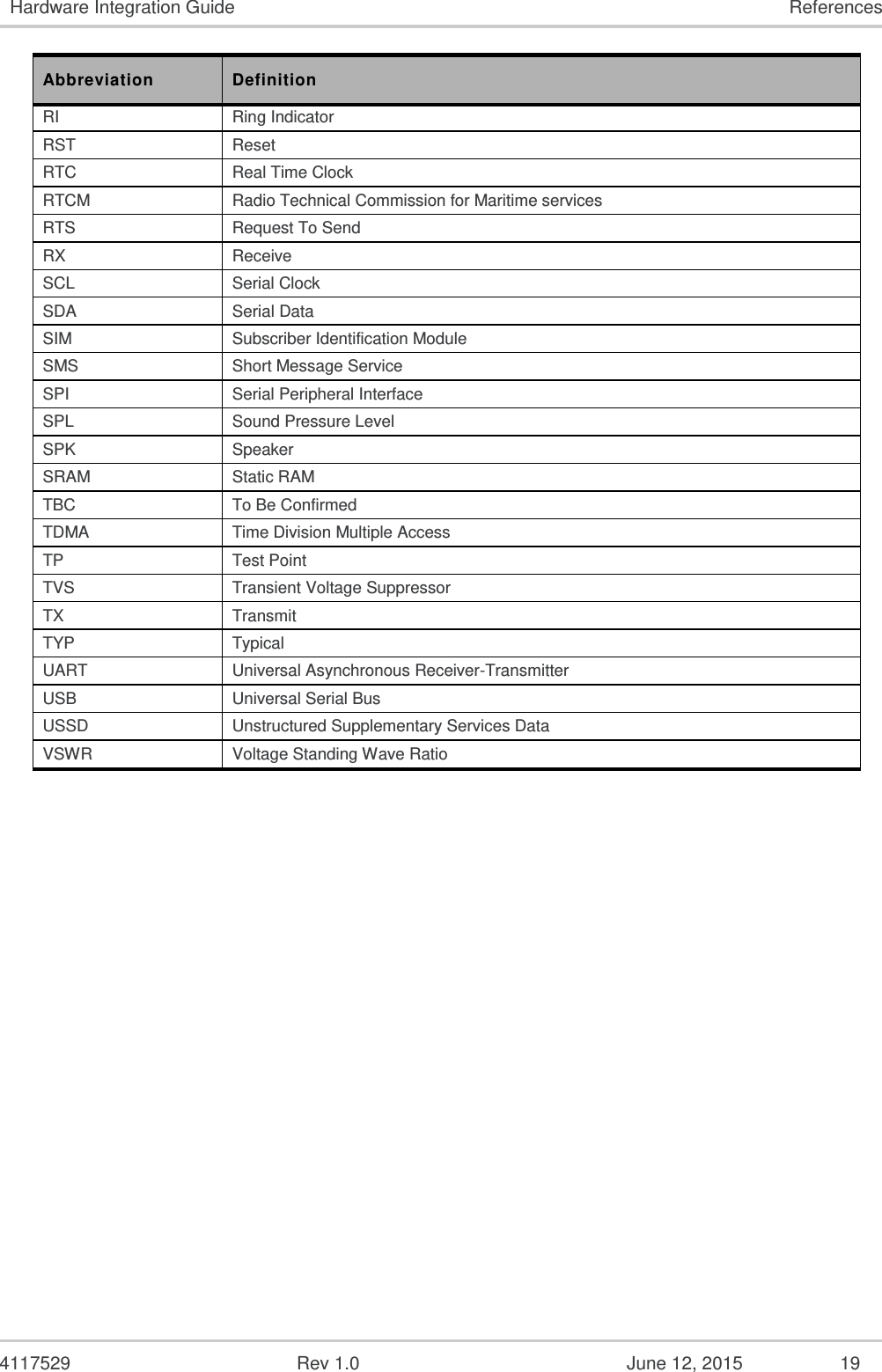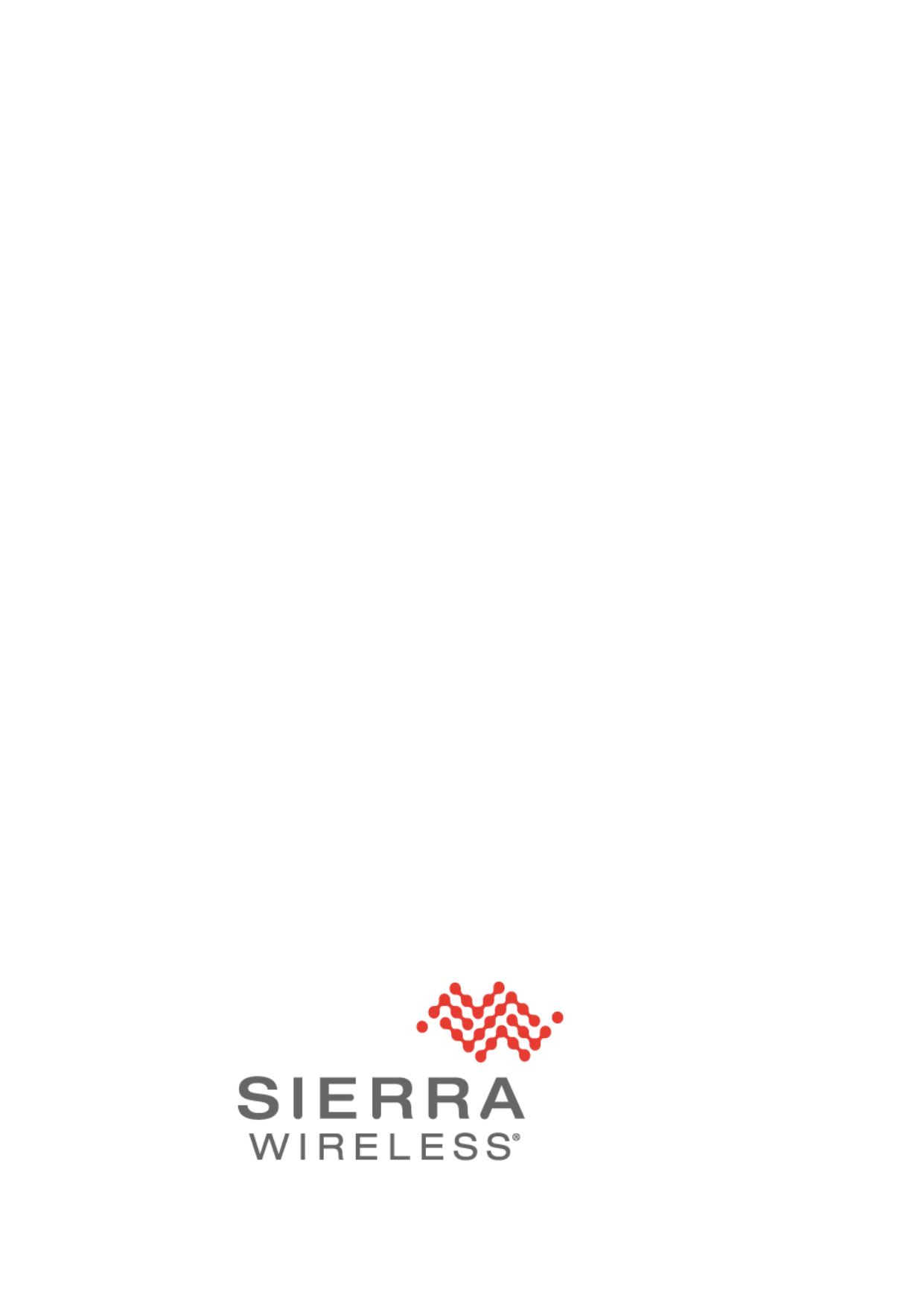Sierra Wireless MC7354B Cellular/PCS GSM/WCDMA/LTE Modem User Manual AirPrime MC7354B Hardware Integration Guide
Sierra Wireless Inc. Cellular/PCS GSM/WCDMA/LTE Modem AirPrime MC7354B Hardware Integration Guide
AirPrime - MC7354B - Hardware Integration Guide - Rev1.0
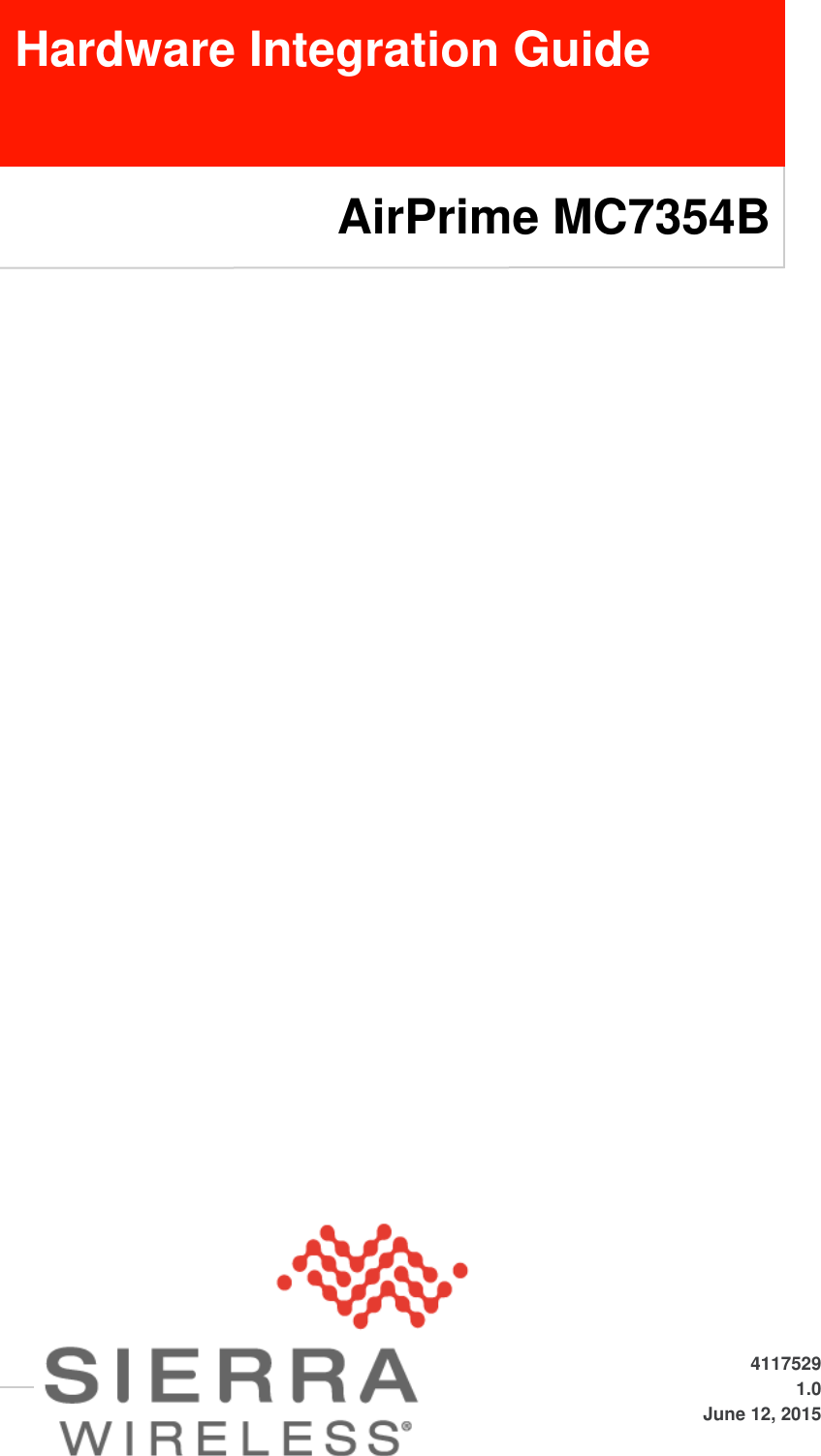
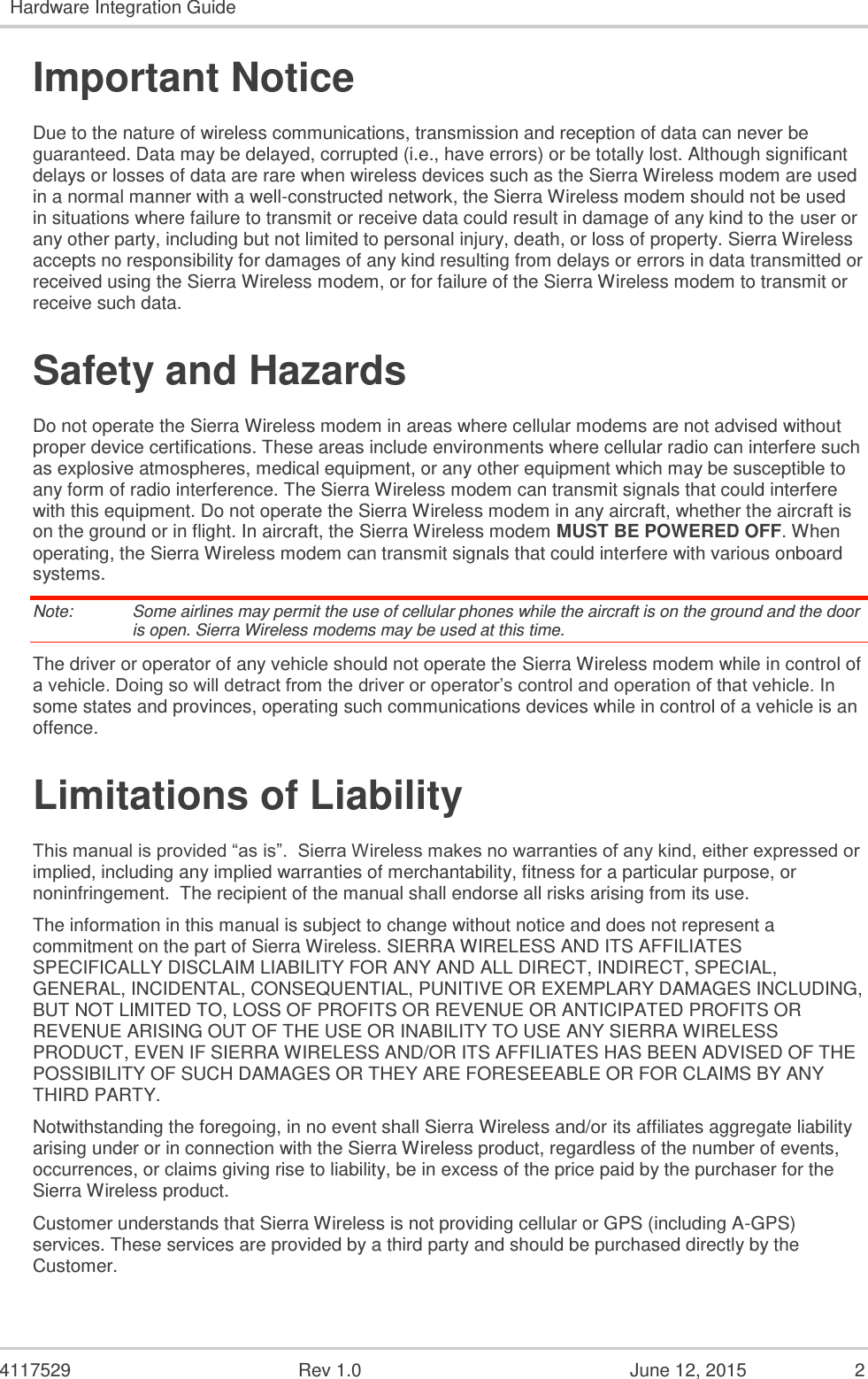
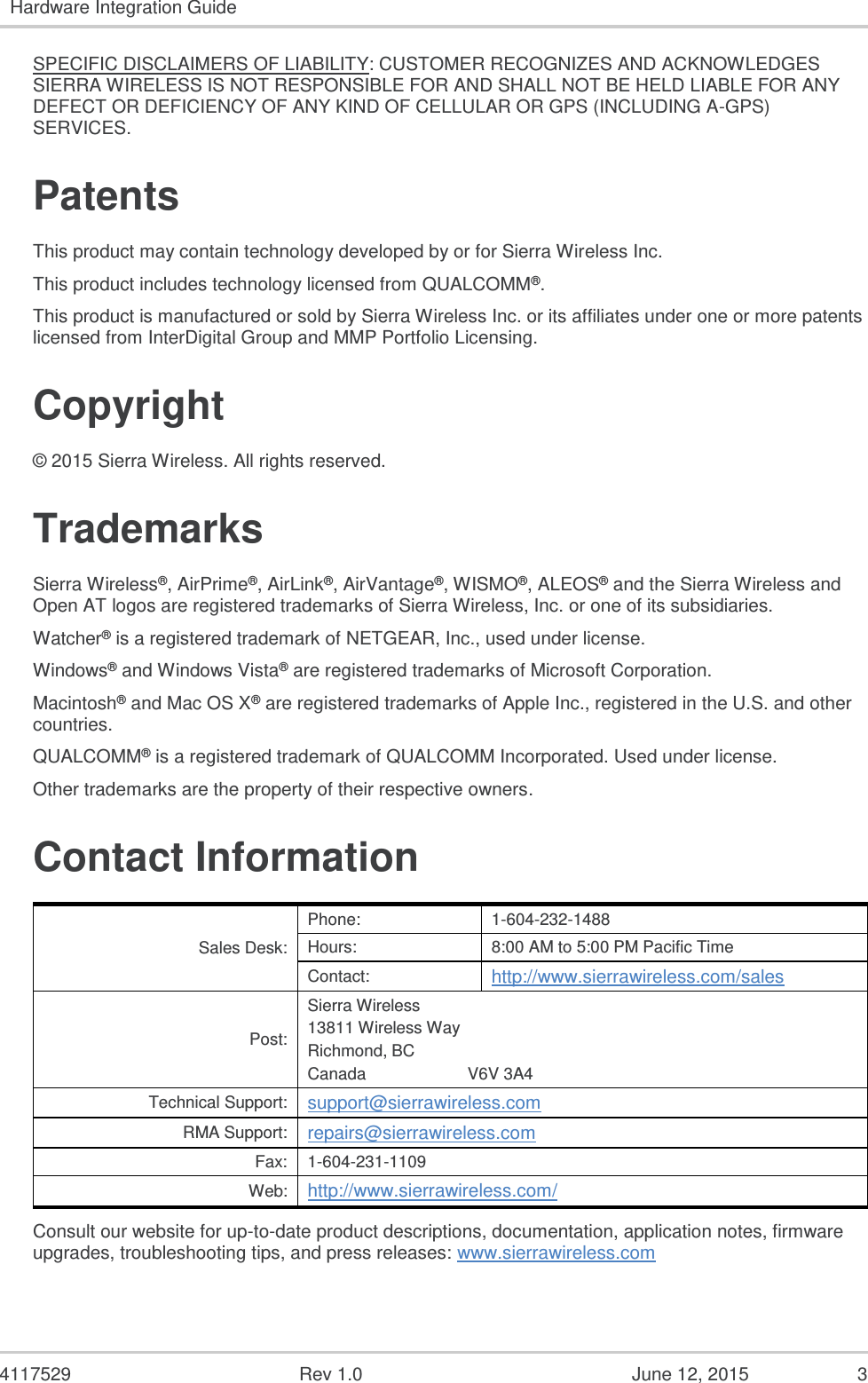
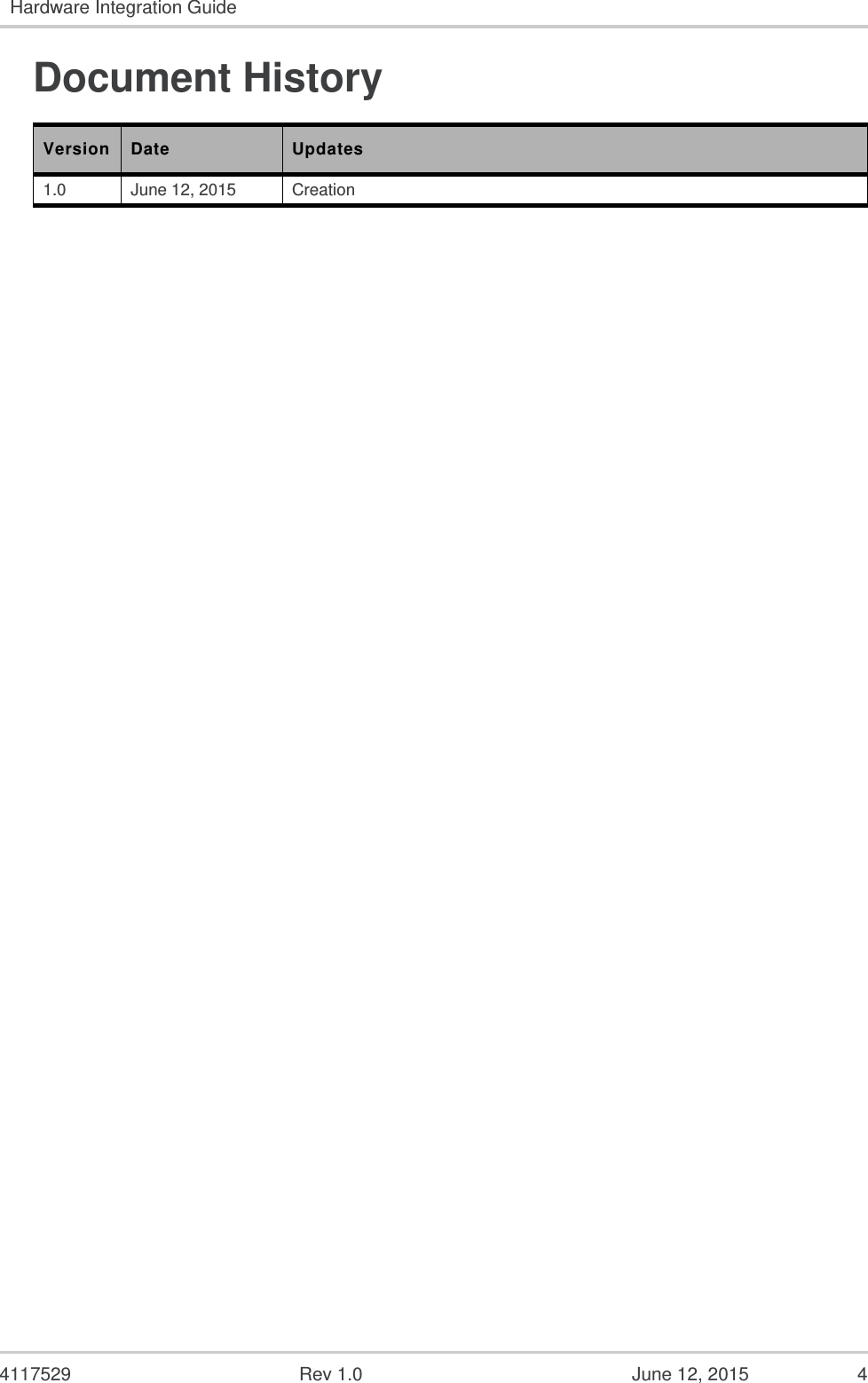
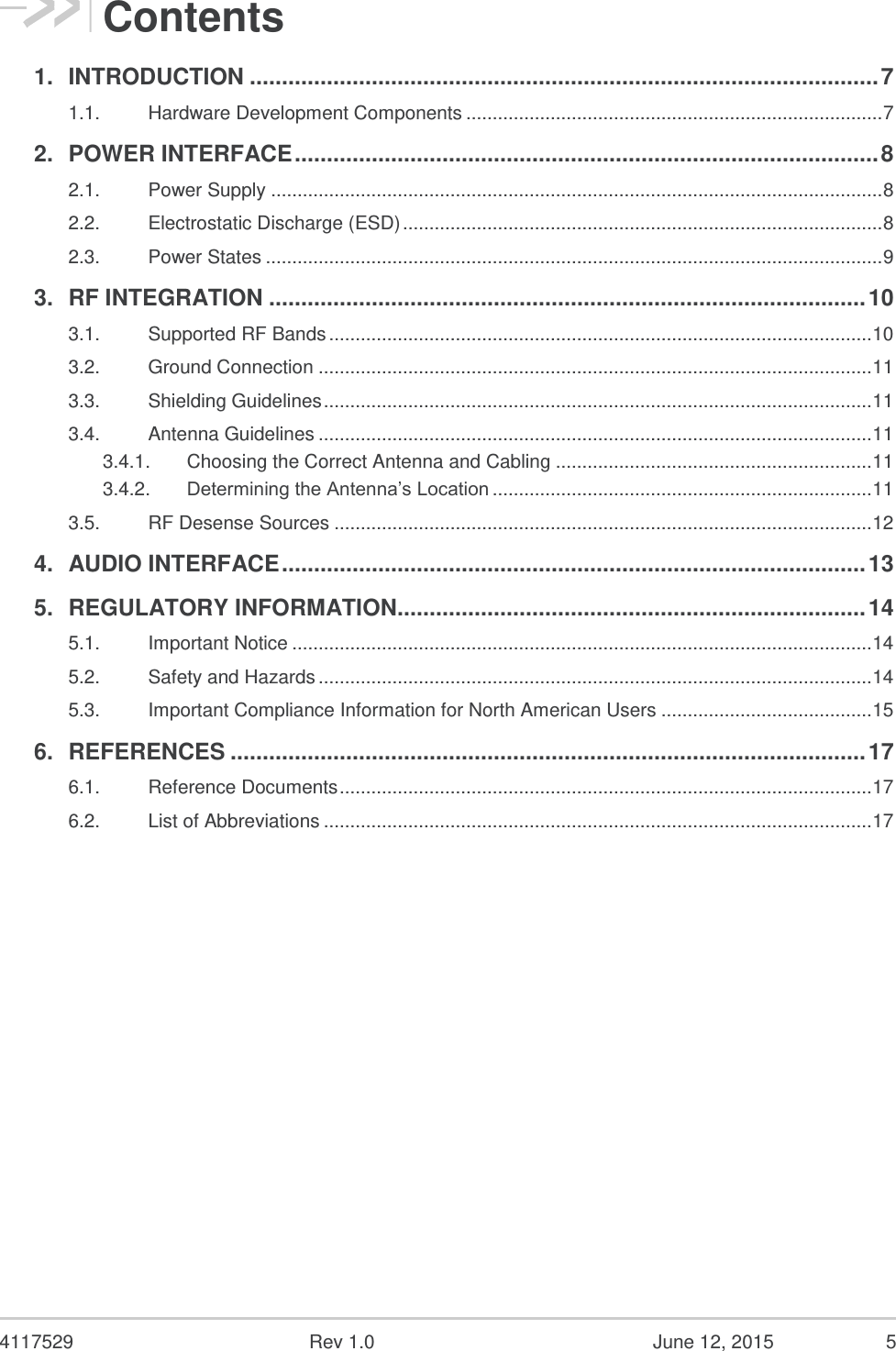
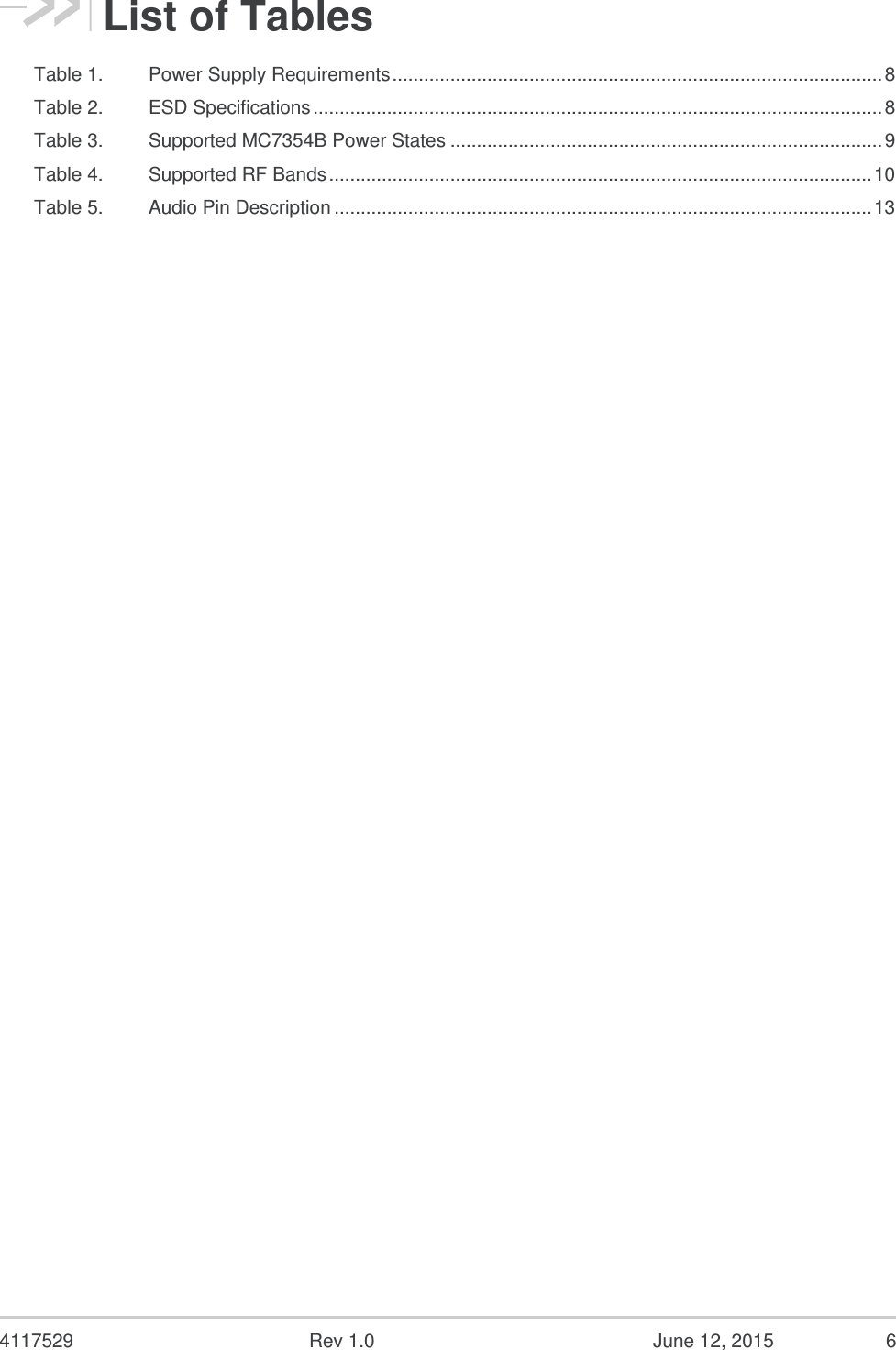
![4117529 Rev 1.0 June 12, 2015 7 1. Introduction The Sierra Wireless AirPrime MC7354B PCI Express Mini Card is a compact, lightweight, wireless LTE-, UMTS-, CDMA- and GSM-based modem. It provides LTE, EVDO Rel 0, EVDO Rel A, DC-HSPA+, HSPA+, HSDPA, HSUPA, WCDMA, GSM, GPRS, EDGE and GNSS connectivity for networking, and M2M applications over several radio frequency bands. The device also supports 2G/3G roaming, subject to carrier provisioning. 1.1. Hardware Development Components Sierra Wireless manufactures the MC Series Development Kit, a hardware development component that is used to facilitate the hardware integration process. This development kit is the hardware development board on which an MC mini card is plugged. The development kit provides access to all of the interfaces supported by the MC mini card. For instructions on using the MC Development Kit, see document [2] AirPrime MC Series Development Kit Quick Start Guide.](https://usermanual.wiki/Sierra-Wireless/MC7354B/User-Guide-2676996-Page-7.png)
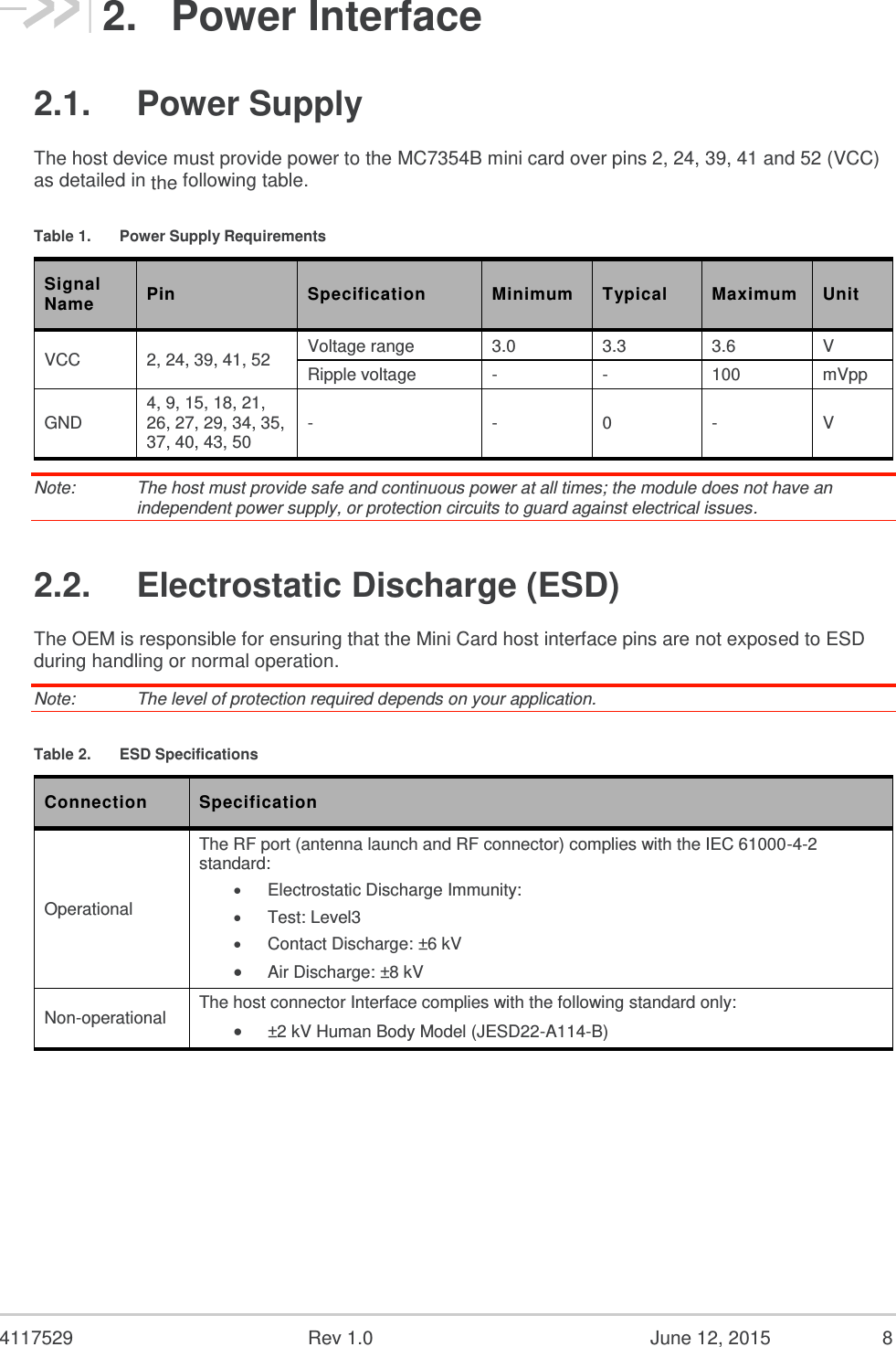
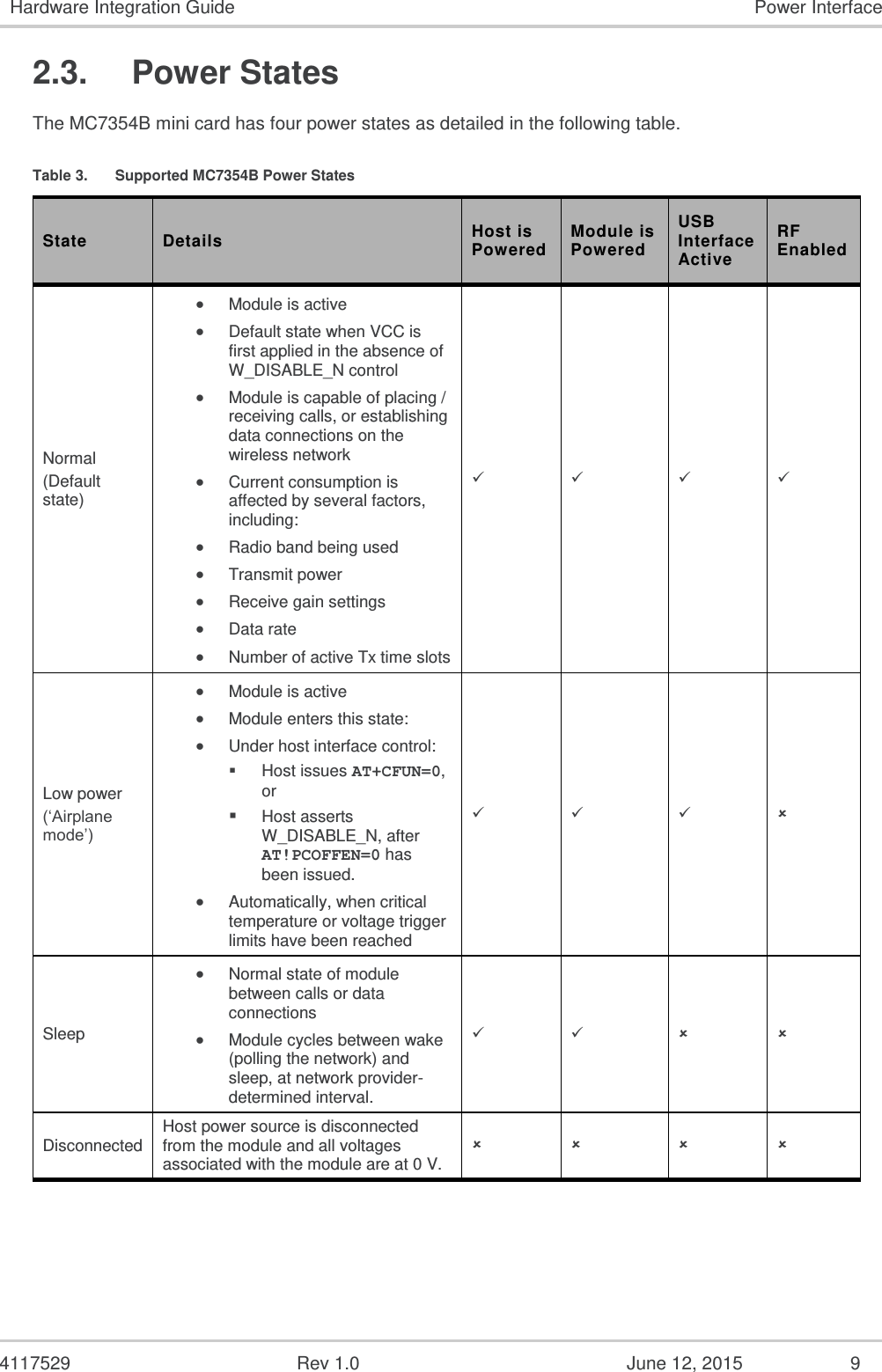
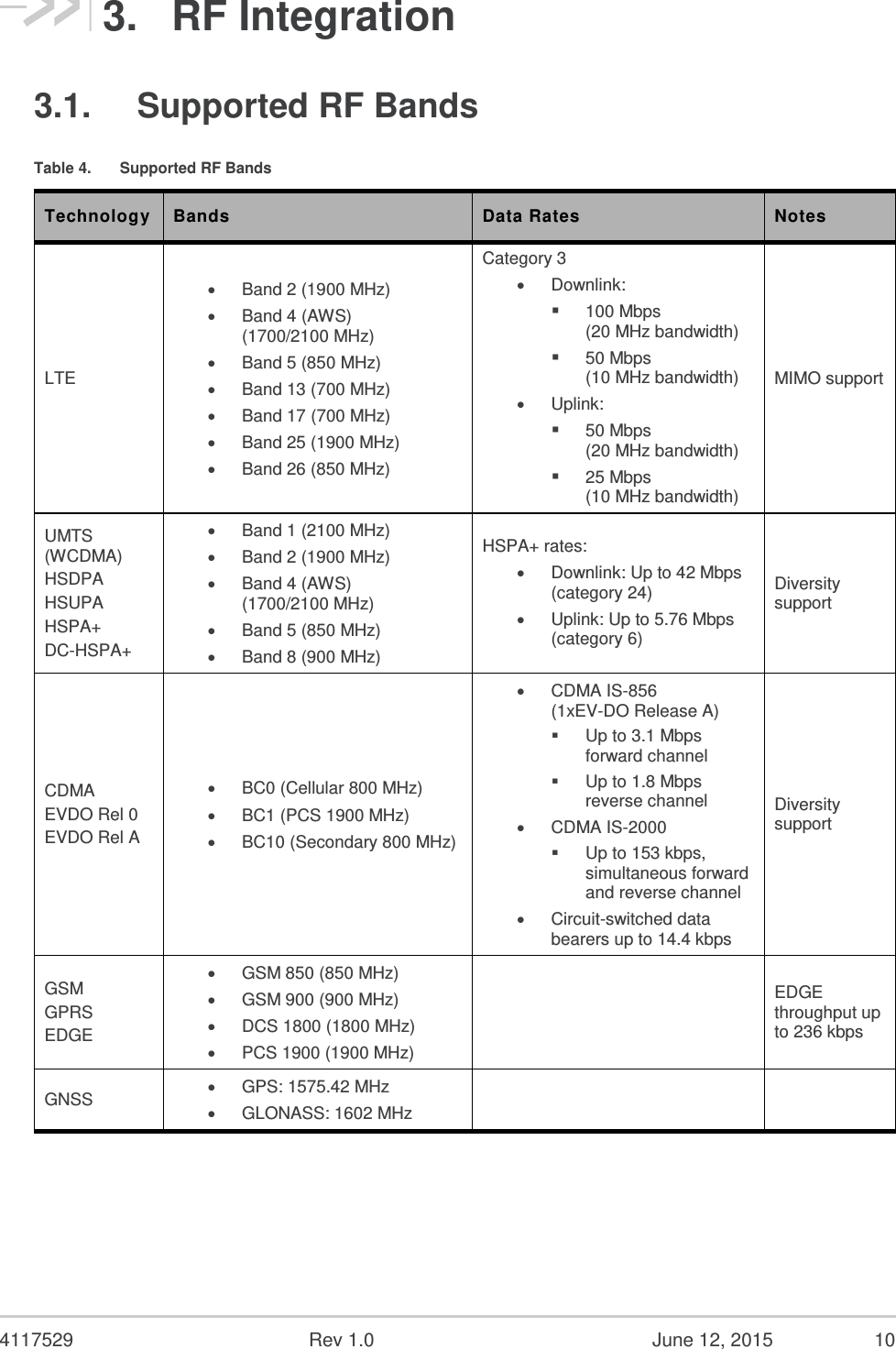
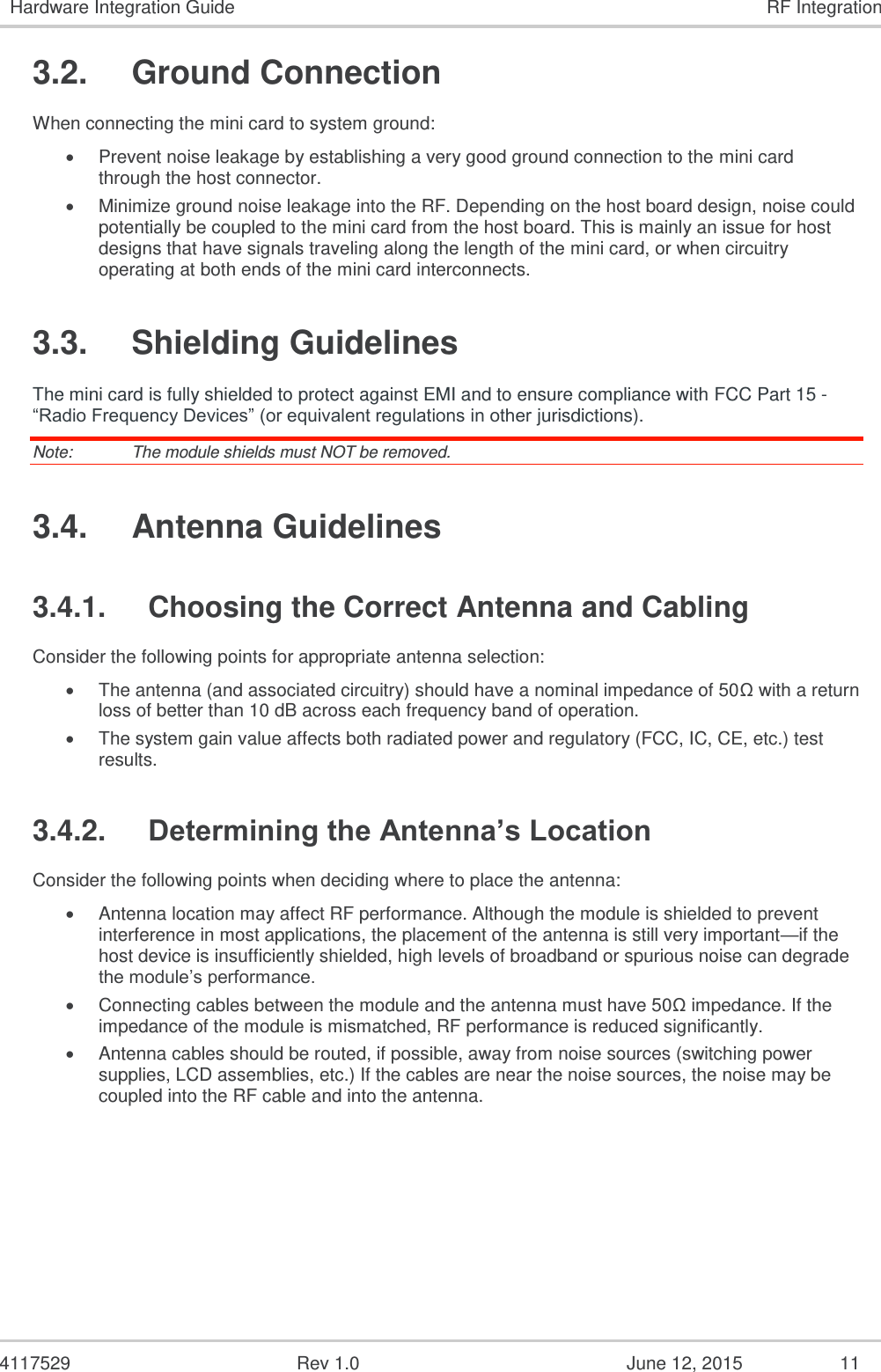
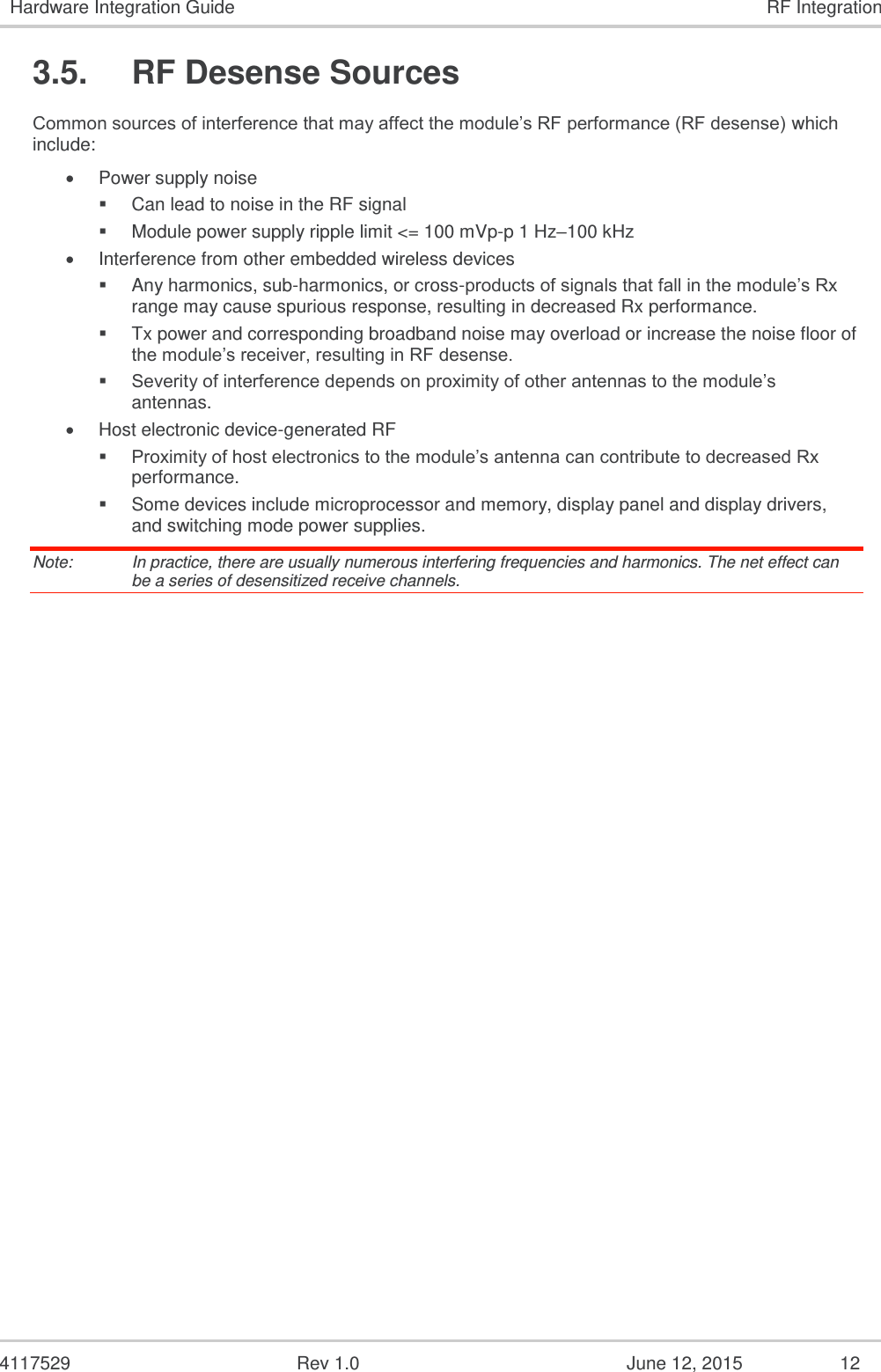
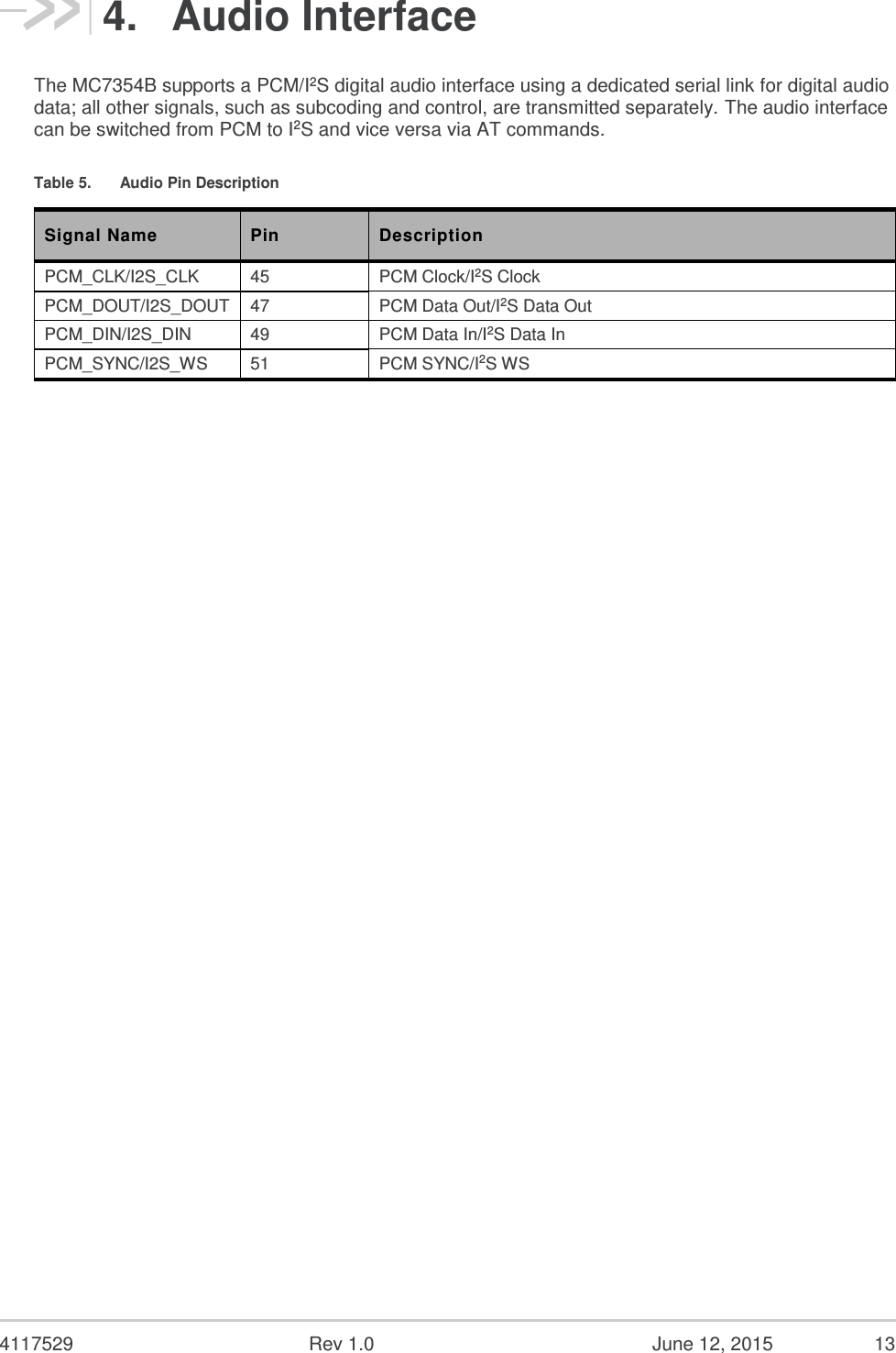
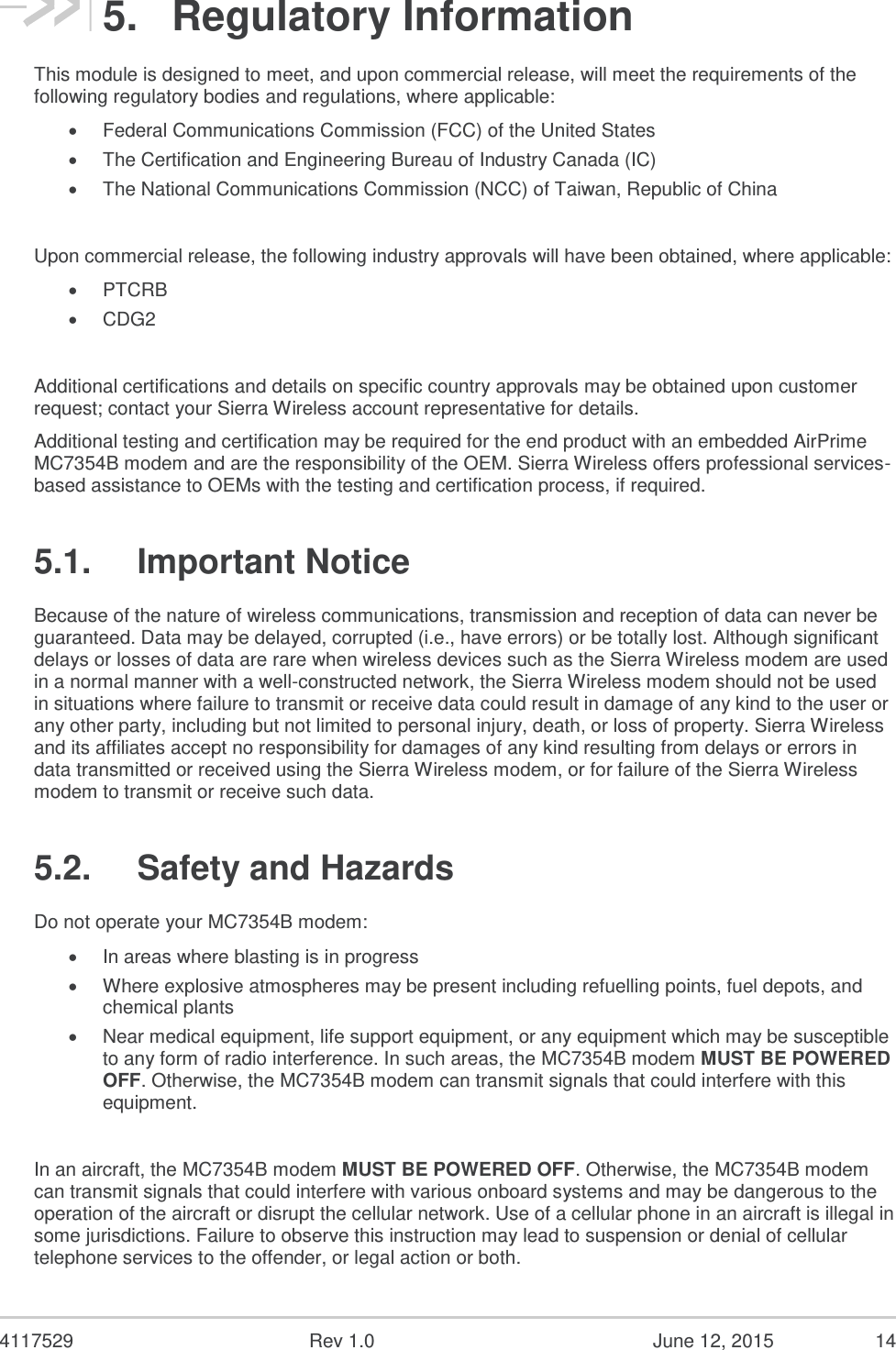
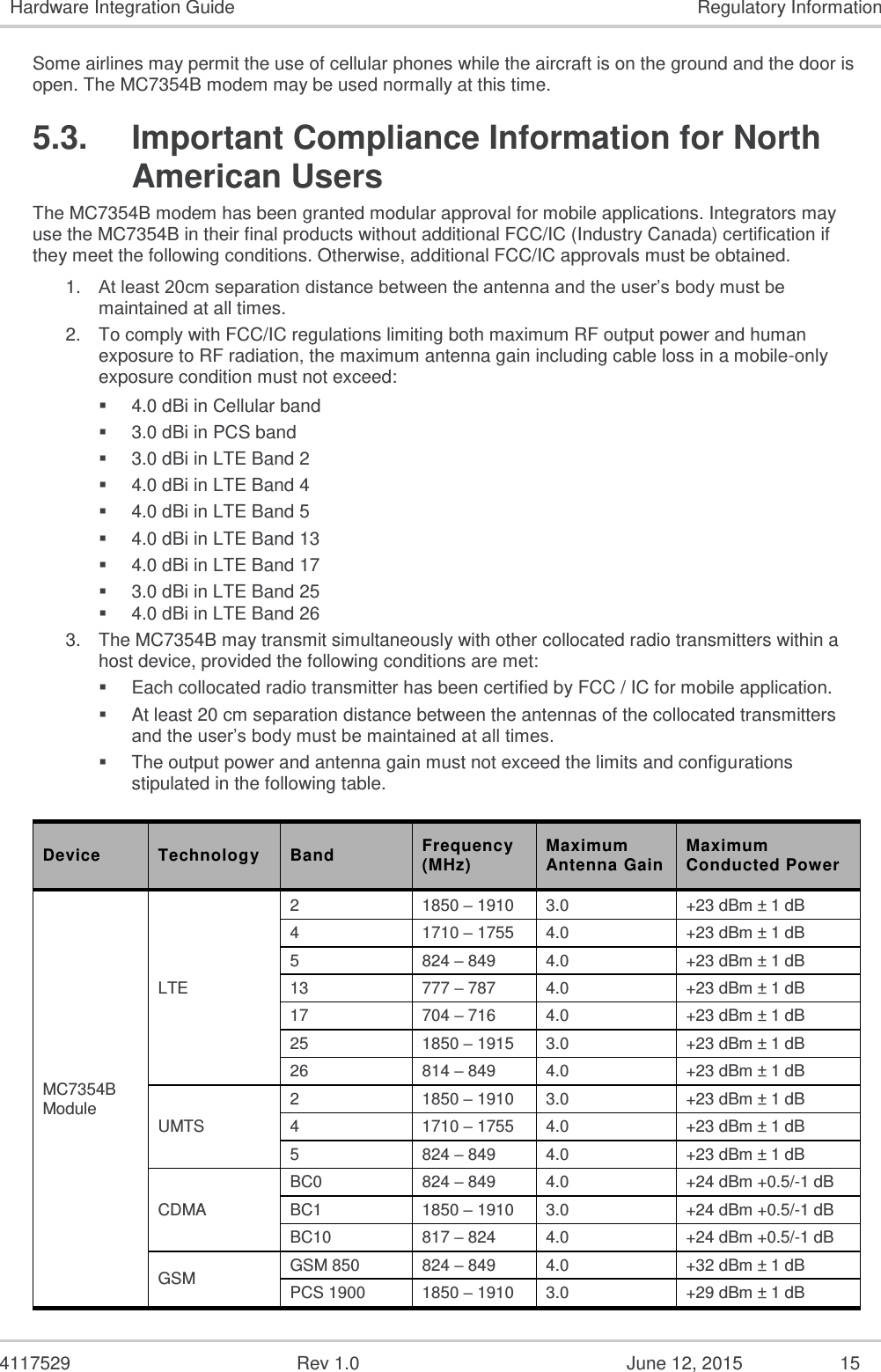
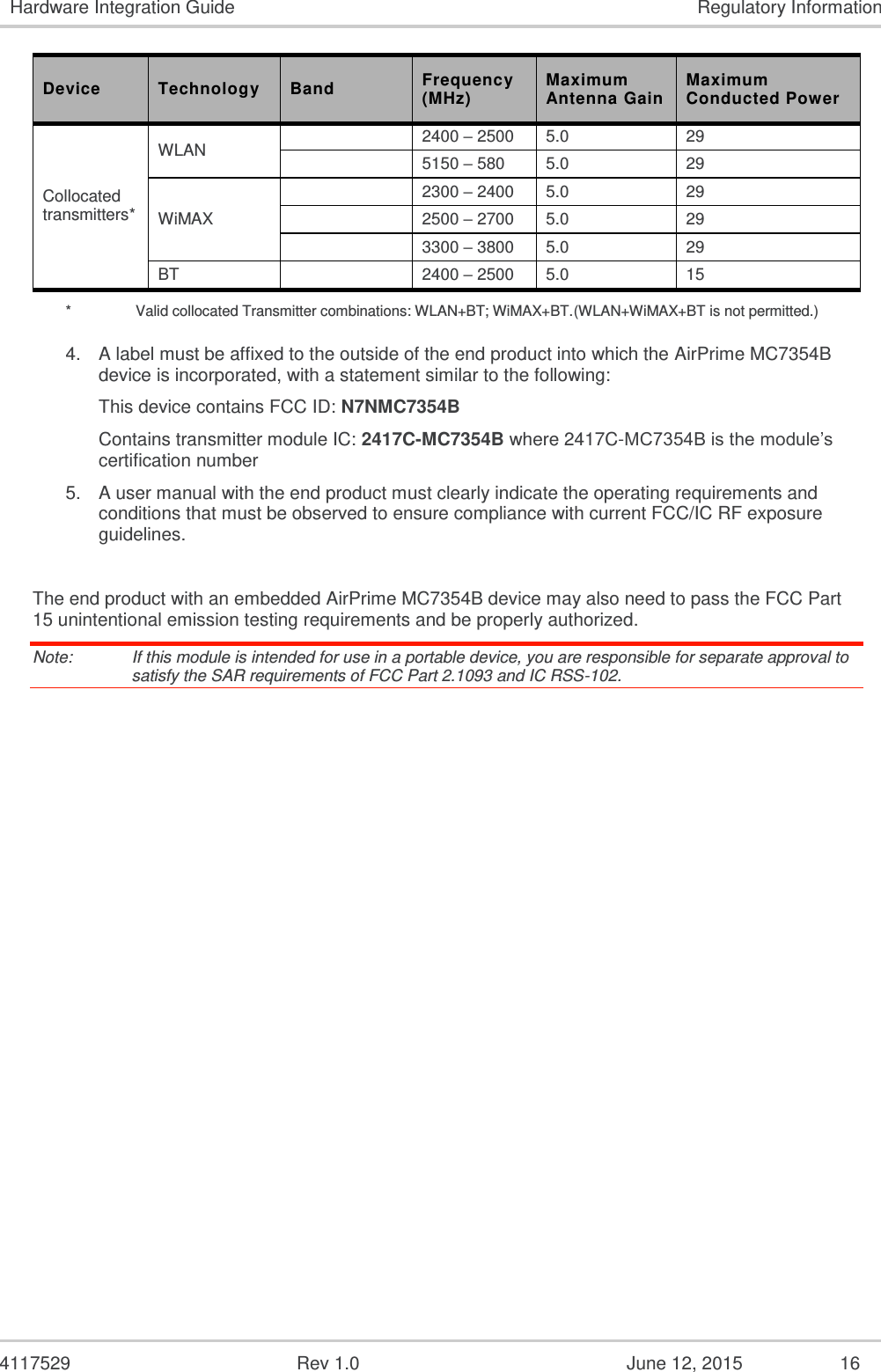
![4117529 Rev 1.0 June 12, 2015 17 6. References 6.1. Reference Documents [1] AirPrime MC7354B Product Technical Specification and Customer Design Guidelines Reference: TBD [2] AirPrime MC Series Development Kit Quick Start Guide Reference: 2130705 6.2. List of Abbreviations Abbreviation Definition AC Alternative Current ADC Analog to Digital Converter A/D Analog to Digital conversion AF Audio-Frequency AT Attention (prefix for modem commands) AUX Auxiliary CAN Controller Area Network CB Cell Broadcast CEP Circular Error Probable CLK Clock CMOS Complementary Metal Oxide Semiconductor CS Coding Scheme CTS Clear To Send DAC Digital to Analogue Converter dB Decibel DC Direct Current DCD Data Carrier Detect DCE Data Communication Equipment DCS Digital Cellular System DR Dynamic Range DSR Data Set Ready DTE Data Terminal Equipment DTR Data Terminal Ready EDGE Enhance Data rates for GSM Evolution EFR Enhanced Full Rate E-GSM Extended GSM EGPRS Enhance GPRS EMC Electromagnetic Compatibility EMI Electromagnetic Interference](https://usermanual.wiki/Sierra-Wireless/MC7354B/User-Guide-2676996-Page-17.png)
